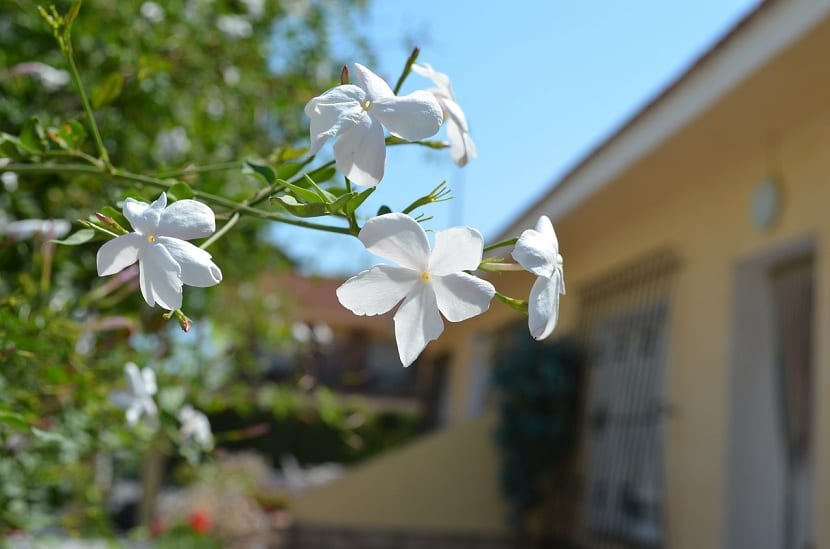
The Aloe Vera plant, too known as the "plant of immortality", is recognized for its numerous health benefits and versatile uses.
This succulent plant is native to North Africa, but can now be found all over the world, making it a popular choice among gardeners and health enthusiasts.
In this article, we will delve into the fascinating world of aloe vera, exploring its characteristics, care requirements and how you can incorporate it into your interior space.
Characteristics of Aloe Vera

Aloe Vera is a short-stemmed plant that can grow up to 2 meters high. Its thick, fleshy leaves are full of a gel-like substance that contains essential nutrients, vitamins and antioxidants.
This gel is what gives aloe vera its legendary healing and healing properties. its cooling effect when applied topically.
This gel can be extracted directly from the plant, making it a valuable component in various skin care, hair care, and medicinal products.

It is a member of the Liliacea family, it is a perennial plant, from the succulent family. They grow in groups, their leaves are long and the flowers are tubular, orange-yellow.
They are very showy and appear at the top of tall spikes that expand outward from the center of the plant.
There are approximately 400 species of aloe, but "Barbadensis Miller", known as Aloe Vera, is the one that has the most notable healing properties.
A very significant detail to know is that the word aloe in Sanskrit means Goddess.

One of the most notable characteristics of aloe vera is its ability to survive in almost any climate. This plant is incredibly hardy and can thrive in both hot and dry conditions. as in more temperate regions.
Its adaptability and low maintenance requirements make it an excellent choice for both experienced and beginner gardeners.
Aloe Vera Care

To ensure optimal growth and health of your aloe vera plant, providing proper care is essential. Next, we will see some important factors to take into account for its proper development.
Lighting design
Aloe Vera thrives in bright, indirect light. Place your plant near a window where it can receive plenty of natural light. throughout the day.
However, be careful not to expose it to direct sunlight for long periods, as this can cause sunburn and damage the leaves.
Irrigation
It is a plant from the succulent family, which means it can store water in its leaves. ThereforeIt is highly drought tolerant and can withstand periods of neglected watering.
Water deeply, but infrequently. Allow the soil to dry completely before watering again to avoid overwatering, which can cause root rot.
Land
Proper draining soil is crucial to plant health. Use a specific soil mix for cacti or succulents or create your own cCombining regular potting soil with sand or perlite to improve drainage.
Avoid using heavy, water-retaining soils, as these can cause root rot.
Temperature and humidity
Aloe Vera thrives in temperatures between 13°C and 27°C. It can tolerate slightly higher or lower temperatures, but extremely cold or hot conditions can damage the plant.
Regarding humidity, adaptable and can tolerate low and medium levels of humidity.
Flowering
It is important to know that it spreads easily from shoots that begin to appear near the base of mature plants.
Flowering occurs only on mature plants, generally in the summer.
As for plants that are in pots, flowering will occur in plants grown in suitable conditions such as: placing them near windows where they can receive sun, or places with a lot of sun outdoors.
Diseases and pests
It is generally resistant to pests, but can still succumb to mites and mealybugs.
Regularly inspect your plant for signs of infestation, such as cobwebs or small white insects. If an infestation occurs, treat it immediately using organic pest control methods.

The aloe beetle is a pest that pierces the plant to drink the sap from the leaf, in some cases it ends up piercing the stems, which can cause the plant to rot and they end up dying.
It is the number enemy of the plant, it leaves a dark spot on the leaf the size of a pea.
In that case you have to kill them quickly with a pinch of systemic insecticidal powder, which you can also use as a preventive measure on the roots.
By following these guidelines, you can successfully grow a vibrant and thriving aloe vera plant indoors, taking advantage of its many benefits all year round.
Introducing Aloe Vera into interior spaces

Although commonly grown outdoors, it can also thrive as houseplant, adding a touch of greenery to your living space. Here we offer you some tips for growing it indoors:
- Choose the right pot: Select a pot that is at least 8 centimeters larger in diameter than the plant's current container.
Make sure the pot has drainage holes to prevent water buildup, which can cause root rot. - Interior lighting: Place your aloe vera plant near a sunny window where it can receive bright, indirect light. If your home lacks natural light, consider using artificial grow lights to supplement the plant's light requirements.
- Maintain adequate air circulation: It needs proper air circulation to prevent fungal diseases and promote healthy growth. Make sure your interior space has enough ventilation, especially if you have several plants in close proximity.

Finally, Aloe Vera is a truly magical plant that offers a multitude of benefits. Whether you are interested in taking advantage of its healing properties or simply adding a touch of nature to your interior space.
Just remember to provide it with the right conditions, including adequate lighting, well-draining soil, and the occasional dose of water. With proper care, your plant will reward you with its stunning appearance and diverse uses.
So why wait? Bring the enchanting world of Aloe Vera into your life today and experience its wonders first-hand!